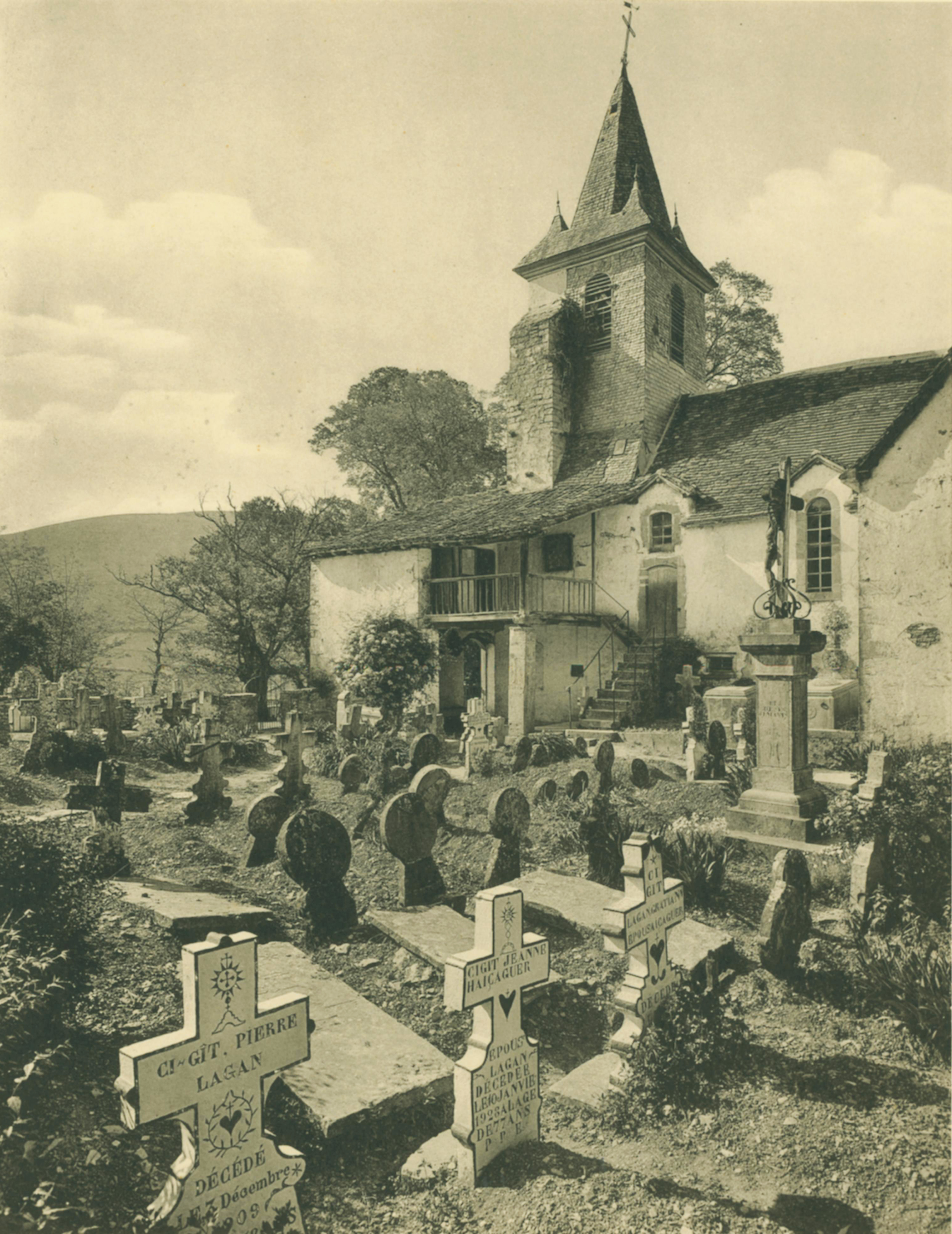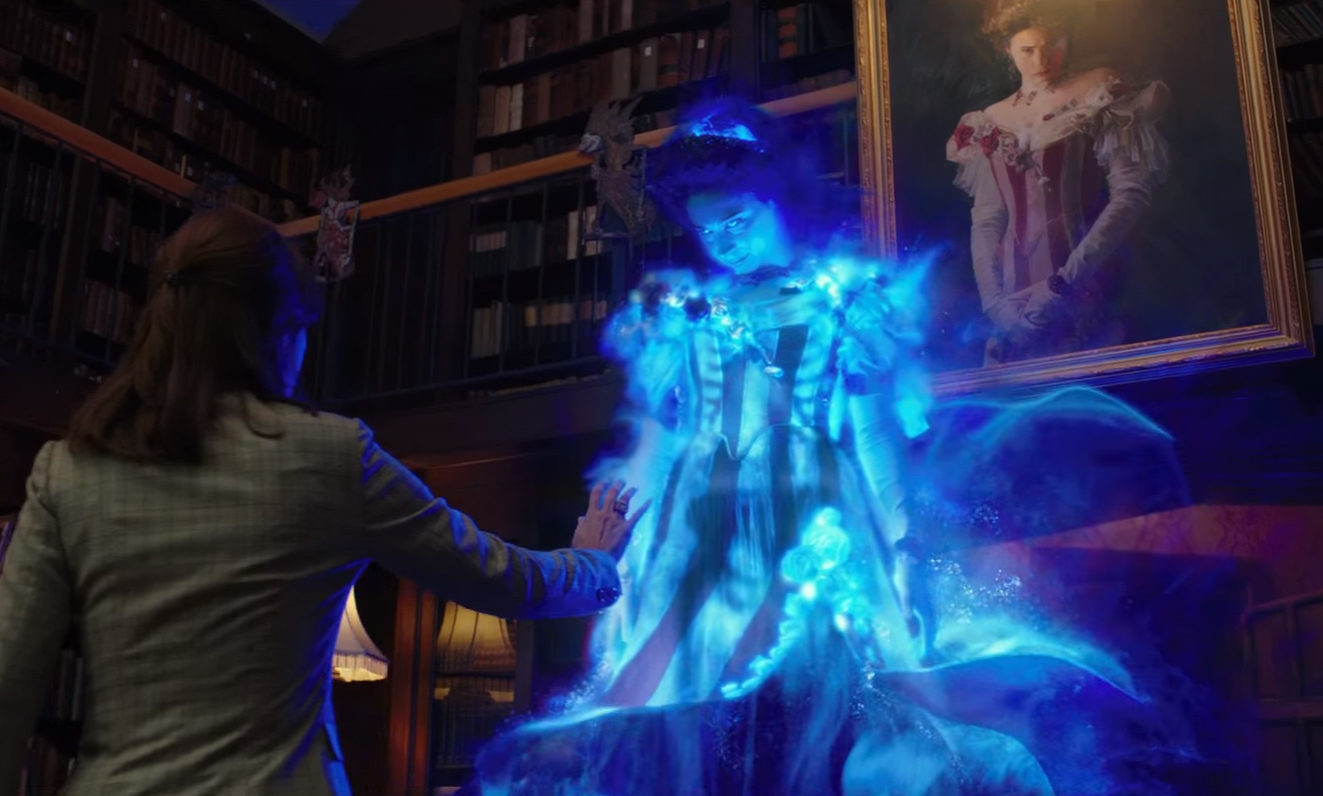
Cemetery of Lantabat (Lower Navarre).
One of the most frequently occurring universal issues in traditional storytelling concerns spirits and the afterlife. Spirits or ghosts are the souls of the dead that appear to the living and manifest their grief. The apparitions may either be seen as exact reproductions of the body of the deceased or take a different guise. The supernatural has been a recurrent, and at times even fashionable, theme in literature and film.
As Barandiaran pointed out, the traditional acceptance of an animistic view of the world helped maintain the belief in a continued existence. Furthermore, some of the attributes of spirits reveal influences from the ancient Roman concept of the migration of the soul. In actual fact, ghost stories are many a time mixed with legendary or mythological descriptions.
Both the home and specially the hearth have great relevance in ghost accounts, as they might be inhabited by spirits of former residents, and so are churches and cemeteries where the dead rest. Same as occurs in mythological narratives, woods and crossroads are also typical haunted locations.
Tales of revenants lie far back in time for many of us and are on occasion dealt with in a humorous or even ironic way. Nevertheless, certain fossilised linguistic expressions have survived to the present day: somebody may look like a lost soul (parecer un alma en pena, in Spanish) or be nothing but a soul full of despair (tener el alma en pena).

Frame taken from the film “Ghostbusters“.
Wandering souls are in most cases tied to this world by unresolved business. Having failed to fulfil a promise or obligation, they return to the realm of the living with a specific purpose, and their penance shall last until their goal is achieved. Spirits can manifest themselves as tangible or intangible entities, or a combination of them: strange sounds and noises, bright lights and glares, shadows, smells, corporeal presences, and so on.
Similarly to what happens with mythological characters, apparitions of spirits are more frequent at night, though they might take place at any other hour of the day, the ringing of church bells at nightfall and crack of dawn being more often than not the time limits for so mysterious happenings. Special dates such as All Saints’ Day or All Souls’ Day (1 and 2 November, respectively) are particularly significant.
Relatives of the departed, along with friends and acquaintances, are generally the witnesses of the apparitions. There existed ritual formulas to communicate with spirits, some respectful and others rather familiar, to be used accordingly. The requests of the suffering souls embrace the following: suffrage on their behalf, pilgrimage to sanctuaries, atonement of past transgressions and compliance of promises.
A last point to note is the traditionalisation of a number of ghost stories, now part of a rich legacy of folktales and legends.
Segundo Oar-Arteta – Etniker Bizkaia – Etniker Euskalerria Groups
Translated by Jaione Bilbao – Language Department – Labayru Fundazioa
References for further information: Rites from Birth to Marriage and Funerary Rites, both part of the Ethnographic Atlas of the Basque Country collection.